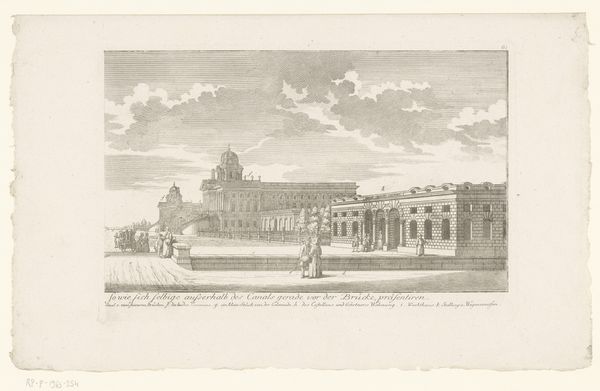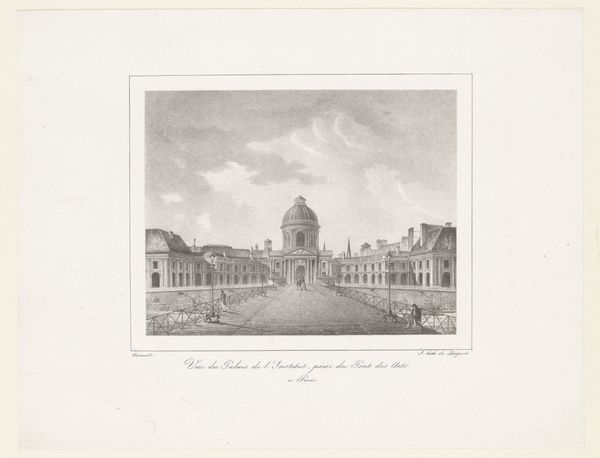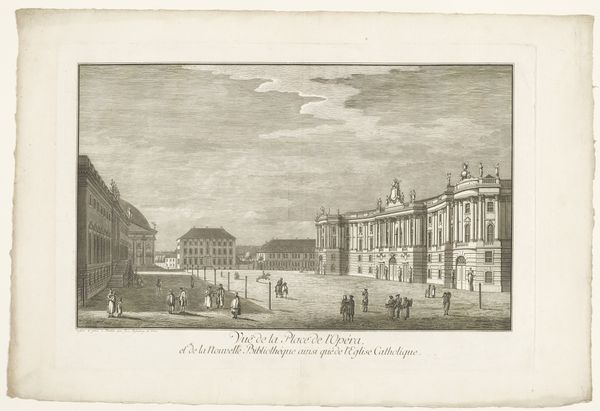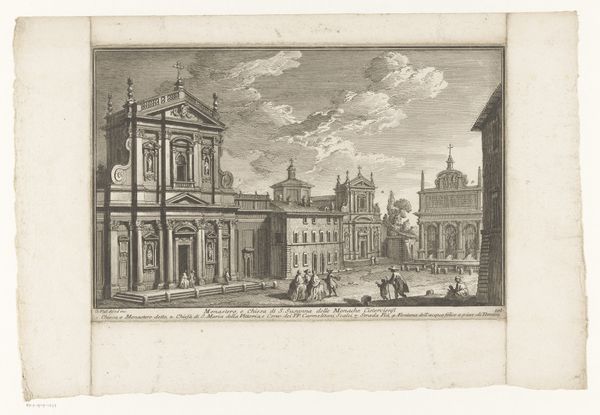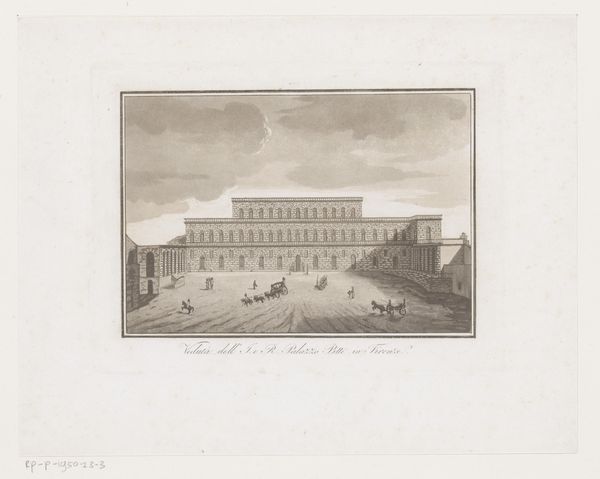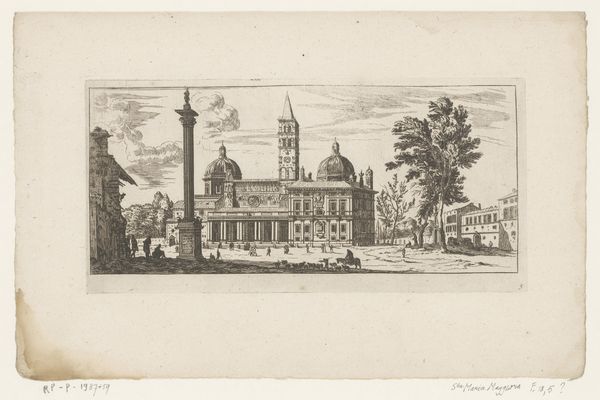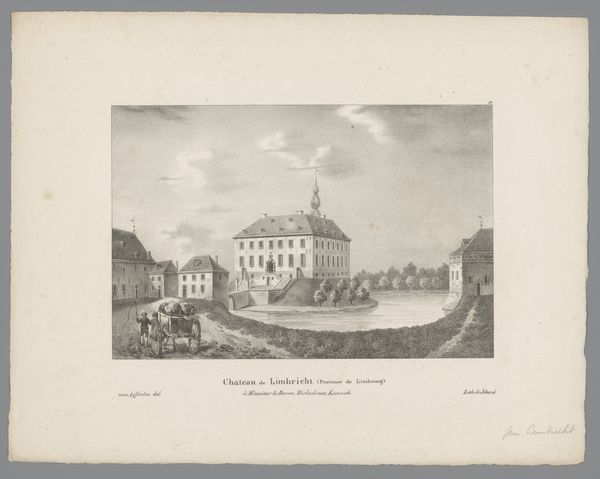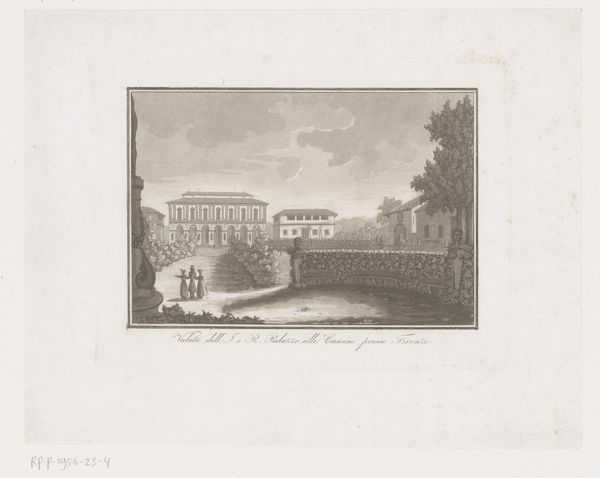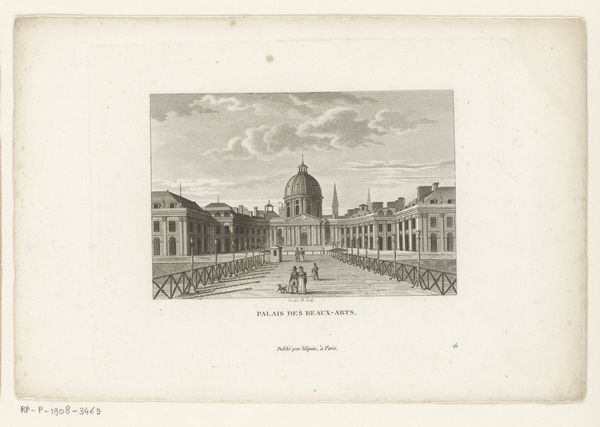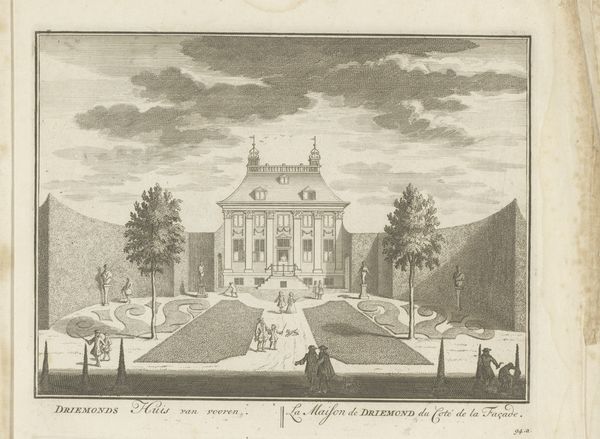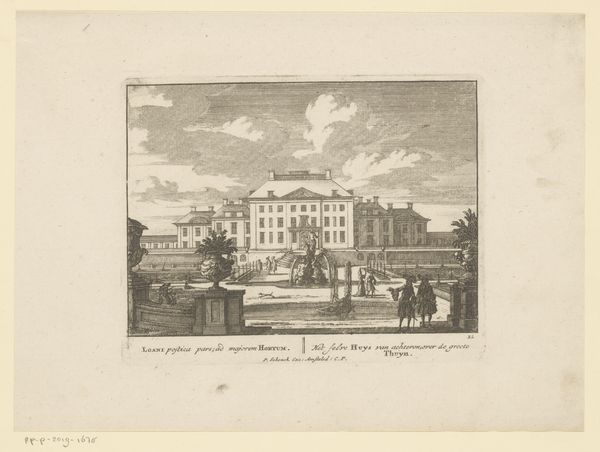
print, engraving
#
neoclacissism
# print
#
landscape
#
cityscape
#
history-painting
#
engraving
Dimensions: height 204 mm, width 260 mm
Copyright: Rijks Museum: Open Domain
Editor: This is "Zicht op een plein in Mazzarò," a print made between 1753 and 1819 by Pierre Gabriel Berthault, currently housed in the Rijksmuseum. It feels like a stage set, somehow frozen and idealized. What strikes you when you look at it? Curator: What I see is an exercise in power, cleverly disguised as a tranquil scene. The grandeur of Neoclassical architecture often implies control, order, and a very specific kind of social narrative. Consider who gets represented in such meticulous detail and, conversely, who is missing. How does this "ideal" serve the dominant political and social forces? Editor: I hadn't really thought about absence. It does feel rather devoid of… life. Do you think the clarity and precision of the engraving enhance that sense of control? Curator: Absolutely. The medium itself reflects the era's obsession with scientific accuracy and rational thought, which were then used to justify colonial endeavors and maintain class hierarchies. Look at how the buildings dwarf the figures. How do you think the people in this square experienced that scale on a daily basis? What did this architectural language mean to them? Editor: It must have been pretty intimidating. Seeing it that way makes me think about the role of art not just as representation but as an active participant in power structures. Curator: Exactly. By questioning whose stories get told and how, we can better understand the complex interplay between art, power, and social justice, even in seemingly innocuous landscapes. Editor: Thank you. I’ll never look at a Neoclassical cityscape the same way again. Curator: That’s the power of art – and questioning it.
Comments
No comments
Be the first to comment and join the conversation on the ultimate creative platform.
